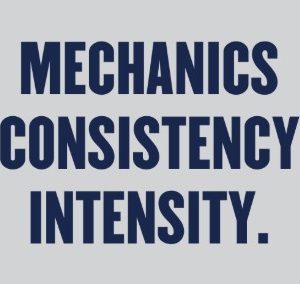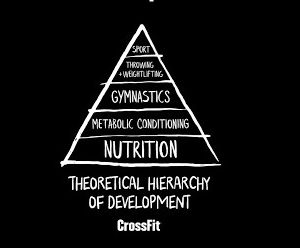“Scaling for Success: Training Smart for Longevity and Performance”
Scaling: Why It Matters and How to Do It Right
At Coastal CrossFit, we believe in training with purpose — and that includes scaling your workouts when needed. Whether you’re a seasoned athlete or new to CrossFit, scaling is not a shortcut or a compromise; it’s a tool to help you train smarter and get the most out of every session.
Why Scale a Workout?
Scaling is about preserving the stimulus of the workout. CrossFit workouts are carefully programmed with specific goals in mind — whether that be speed, power output, muscular endurance, or skill development. Scaling ensures that each athlete experiences the intended challenge, regardless of their individual fitness level, experience, or physical limitations.
Adjustments may be needed due to:
- Current fitness level or experience
- Existing injuries or movement restrictions
- Daily readiness (e.g., poor sleep, hydration, stress, or fatigue)
- Technical limitations on high-skill movements
Understanding the Stimulus
Before you begin any workout, ask yourself:
- What is the intended stimulus of this WOD?
- Is it supposed to be fast and intense (e.g., Fran)?
- Long and grinding (e.g., Murph)?
- Heavy and strength-focused?
For example, Fran (21-15-9 of thrusters and pull-ups) is meant to be a fast, high-intensity sprint — ideally finished in under 10 minutes. If your version of the workout takes 30 minutes, broken into singles, you’ve missed the intended effect and likely lost the intensity that drives results.
Scaling the reps, load, or movement allows you to finish with a similar effort to the intended version — and that’s where progress is made.
Scaling Isn’t a Step Back — It’s a Step Toward Progress
Removing ego is essential for getting the most out of your training. Scaling is not about making things easier; it’s about making them appropriate. Intensity drives results, but only when applied to movements that are performed with sound mechanics and consistency.
Injury, mobility restrictions, or simply being new to a movement are all valid reasons to scale. Our coaches will help modify workouts to keep you moving safely while maintaining the core intent of the WOD.
The Mechanics–Consistency–Intensity Model
For newer athletes especially, the priority should be:
- Mechanics – Learn how to move well.
- Consistency – Reproduce good movement every time.
- Intensity – Once you can move well consistently, then start moving faster or under heavier load.
Skipping these steps can lead to poor movement patterns, plateaus, or even injury. But mastering them in the right order leads to long-term gains and resilience.
What Should Be Considered When Scaling?
- Time domain: Does your version allow you to finish in the same timeframe?
- Reps/Load: Can you complete most sets unbroken or with minimal rest?
- Skill Level: Can you perform the movement correctly under fatigue?
- Safety: Is your form breaking down under load or speed?
Injuries and Scaling
If you’re working through an injury, the goal remains the same: retain the workout stimulus. That might mean subbing out movements, reducing impact, or switching from barbell to dumbbell versions. Movement is medicine, and scaling ensures you continue training effectively while healing.
Coaching Support at Coastal CrossFit
Our coaches are here to guide you through each workout with intention. We provide clear direction on:
- The why behind the workout
- Scaling options tailored to your ability
- Modifications for injuries or limitations
- Strategies to help you stay safe while working hard
Every athlete is on their own journey — and at Coastal CrossFit, we’re here to help you take the next step, every session.
Final Thought
Scaling is how you train smarter, stay consistent, and ultimately become fitter, stronger, and more resilient. Don’t chase the Rx label. Chase the stimulus. That’s where the magic lies.





